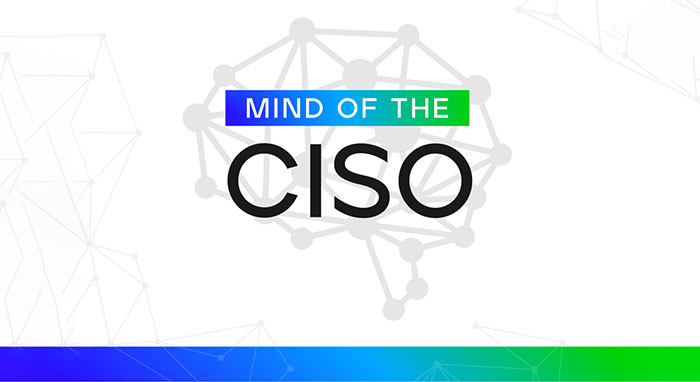Blogs
The latest cybersecurity trends, best practices, security vulnerabilities, and more

Behind the Breach: CISO Lessons for Cyber Resilience
By Trellix · November 28, 2023
This blog was written by Harold Rivas
Cybersecurity is an ever-evolving battlefield where the adage 'It's not a matter of if, but when' resonates deeply for CISOs safeguarding their organizations. One thing I have learned during my career is that incidents will happen. It's a harsh yet undeniable truth we, as cybersecurity leaders, confront throughout our careers.
As I’ve written before, it’s vital that cybersecurity leaders collaborate and unite for defense. That’s why Trellix’s recently released report "Mind of the CISO: Behind the Breach" is a must-read for anyone in this industry. The report surveys more than 500 global CISOs across major industries, seeking to understand the challenges they face after a major attack.
The report is packed with fascinating information, but one critical issue stands out: many CISOs lack the necessary support to create proactive defense strategies until after a breach occurs when much of the damage is irreversible. Let's look behind the breach to uncover the challenges and learnings CISOs face in the aftermath of an incident to find a better path toward cyber resilience.
The CISO’s Role as Communicator
As CISOs, we must embed ourselves into the top-level organizational dialogue, not just as technical experts but also as chief communicators and educators, on the impact cyber risks such as ransomware have on the broader business landscape.
One of the most important things you can do as a CISO is have a conversation with your board to help business leaders understand the risks and the tradeoffs that are necessary to counter them.
One CISO from an Australian government agency highlighted a pivotal lesson, "The most crucial lesson was raising awareness at the board level... Unfortunately, it took an incident to spark that realization."
Our findings underscore the urgency for transformative change and highlight the pivotal role of board support in steering away from the “wait-and-react” mindset. Post-attack, over 95% of CISOs received increased board support. This support translated into a 46% budget hike for new tools and technologies, with 41% implementing new security frameworks and standards.
Fighting Diverse Threats
CISOs face the challenge of combating increasingly sophisticated and diverse attacks. The “Mind of the CISO” report revealed that cybercriminals leverage a spectrum of avenues to infiltrate organizations.
Data theft attacks (48%), malware (43%), DDoS attacks (37%), credential stealing (37%), business email compromise (37%), and ransomware (37%) dominate the threat landscape, signaling that no single attack type is more prevalent than another.
A CISO from a US-based manufacturing company aptly said, "We need to be ever-vigilant, and no matter how secure we think we've gotten things, no matter how many tools we have in place, it's a constant battle."
This unpredictability emphasizes the need for a comprehensive, proactive defense strategy. Organizations must fortify defenses holistically, addressing every threat with equal gravity. Creating a dynamic defense system resilient against the entire spectrum of cyber threats supersedes predicting specific attacks.
Unveiling Concealed Costs
Our report exposed the hidden costs – stress, data loss, and reputational damage shaping CISOs' post-breach cybersecurity strategies.
For 41% of CISOs, stressed and overworked Security Operations Centers (SOCs) result in heightened security risks due to reduced responsiveness, increased errors, and potential analyst burnout and turnover. While data loss, identified by 42% of CISOs, emerges as a significant cost because it disrupts business operations.
CISOs are stewards of an organization's trust and security. Post-attack, 39% recognized reputational damage as a more substantial cost to the business. "Even if customers or business say, 'It's all fine, you handled it very, very well,' in the back of their minds there are ways this… "How can we rely on this organization? What if it happens again?" shares a CISO of a UK Manufacturing company.
Understanding these nuanced costs highlights the necessity that we, as CISOs, engage in top-level discussions, as the costs transcend financial implications and significantly impact the business.
Proactive Resilience with XDR
At the heart of this proactive approach lies XDR (Extended Detection and Response). To fortify our organizations, advanced technologies like XDR provide the necessary end-to-end visibility and early threat detection. Over 95% of CISOs believe having XDR could have prevented major attacks. With XDR's support and board backing, we can see and act on threats to fortify our "digital castle." In a landscape where the actual repercussions of cyber incidents often emerge too late, XDR and board support are pivotal strategic imperatives.
Here's what a CISO of a UK company shared, "XDR can actually aggregate and correlate data from multiple sources and, therefore, reduce false positives. We see less alert fatigue in the security teams, and XDR allows us to be proactive rather than defensive and post facto, another big difference."
As I stated at the beginning of the article, the best way to secure leadership commitment is to create a dialogue around the hidden truths uncovered in our report, challenge the status quo, and urge us to think and act differently
Ultimately, a proactive, board-supported approach lays the groundwork for a robust defense mechanism. It's not just about fortifying defenses with tools like XDR; it's about ingraining cybersecurity as a strategic imperative within the organizational fabric.
RECENT NEWS
-
Jun 17, 2025
Trellix Accelerates Organizational Cyber Resilience with Deepened AWS Integrations
-
Jun 10, 2025
Trellix Finds Threat Intelligence Gap Calls for Proactive Cybersecurity Strategy Implementation
-
May 12, 2025
CRN Recognizes Trellix Partner Program with 2025 Women of the Channel List
-
Apr 29, 2025
Trellix Details Surge in Cyber Activity Targeting United States, Telecom
-
Apr 29, 2025
Trellix Advances Intelligent Data Security to Combat Insider Threats and Enable Compliance
RECENT STORIES
Latest from our newsroom
Get the latest
Stay up to date with the latest cybersecurity trends, best practices, security vulnerabilities, and so much more.
Zero spam. Unsubscribe at any time.
